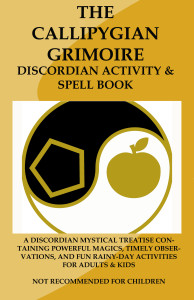 One of the most enduring sub-genres of horror film is the “slasher flick.” The first movie of this type to gain widespread recognition was Tobe Hooper’s 1974 classic The Texas Chainsaw Massacre, in which a traveling band of teenagers are picked off one by one by a chainsaw-wielding madman. Other killfests followed, but it was John Carpenter’s Halloween that made slasher movies a multi-million dollar industry. With $47 million in box office receipts, Halloween remained (after adjusting for inflation) one of the highest-grossing independently-produced films of all time until the indie renaissance of the 1990s.
One of the most enduring sub-genres of horror film is the “slasher flick.” The first movie of this type to gain widespread recognition was Tobe Hooper’s 1974 classic The Texas Chainsaw Massacre, in which a traveling band of teenagers are picked off one by one by a chainsaw-wielding madman. Other killfests followed, but it was John Carpenter’s Halloween that made slasher movies a multi-million dollar industry. With $47 million in box office receipts, Halloween remained (after adjusting for inflation) one of the highest-grossing independently-produced films of all time until the indie renaissance of the 1990s.
Following Halloween’s release, major studios and independent film-makers alike started work on their own slasher films, hoping to cash in on Carpenter’s success. The quality and success of these imitators varied considerably, but the formula was always the same. A killer, usually masked, kills a succession of teenagers in progressively gruesome and imaginative ways. Needless to say, parent groups and self-appointed moral guardians were outraged by these films. As usual, the loudest protests came from fundamentalists Christians, who abhorred the violence, occult themes, and loose morals of the movies.
What fundamentalists seemed to miss about the movies was the (almost certainly unintentional) subtext of the films. At their very heart, slasher movies are about naughty adolescents who are punished for their misdeeds. The slasher’s victims are universally teenagers who meet their maker shortly after (or while) using drug and alcohol or engaging in premarital sex. The soul survivor so these massacres is always a virginal “good girl” who had “just said no.”
In many cases, the slashers are motivated (at least initially) by a quest for revenge against out-of-control teens who have wronged them in some way. Halloween’s Michael Myers embarks on his murderous career by killing his older sister, who chose to make out with her boyfriend rather than take young Michael trick-or-treating. In the original Friday the 13th movie, the killer is a grieving mother whose son drowned because camp counselors were having sex when they were supposed to be watching the boy. In later movies of the franchise the son, Jason, returns to exact his own revenge on irresponsible teens.
In short, the “loose morals” of slasher movies that so enraged the Christian right were the very things that made the films into a sort of morality play for the straight-laced, conservative 1980s. Like the inhabitants of Sodom and Gomorrah in a fire and brimstone sermon, the youth gone wild in slasher movies were punished for their misdeeds. Although Christian tract writer Jack Chick is said to keep a complete collection of Friday the 13th movies in his office, most fundamentalists failed to recognize the fact that slasher movies were selling the same message as everyone from Jerry Falwell to Nancy Reagan: immoral behavior will get you killed.
In recent years, the moralistic subtext of early slasher movies has become something of a running joke among horror film-makers. The most obvious example is Wes Craven’s Scream, in which the teenagers of a town menaced by a slasher comment on the “rules” of slasher films and the “good girl” heroine gives up her virginity despite warnings that it’s the only thing that will protect her from the killer. Oddly, the new generation of horror movies, which often poke fun at the unintentional “morals” of their predecessors, have received very little commentary from the Christian right.



















































